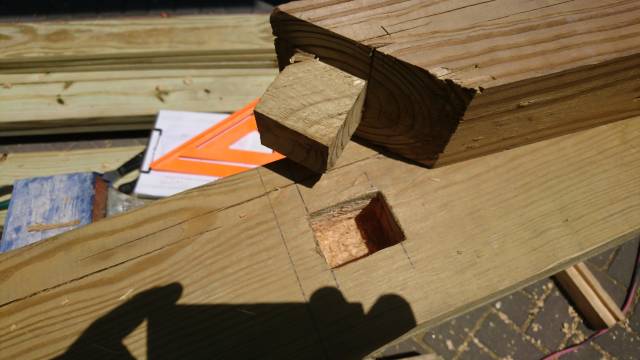Thanks for the advice here. Some really good stuff. I ended up using all 3 saws. Circular, shark pull saw and back saw. I only used the circular for easy plunge cuts. Didn’t take the time to set up beveling, etc. The shark pull saw was good using a guide and for finishing partial circular saw cuts. It’s thin and has both a cross cut and rip blade. The back saw was best for free handing when either I was too lazy to set up a guide or I couldn’t clamp a guide because I was cutting against a bevel.

I have 3 posts and 3 m&t joints. The first one is in an earlier post above. The tenon is straight and the mortise is angled into the post and I was worried about water collecting in the mortise. So for the next 2 I offset the tenon so the mortise would be straight – less chance for sitting water. Plus I thought cutting the mortise would be easier. It turns out that cutting the mortise was not really any easier. It took about the same amount of time. But the tenon seems to be a lot weaker than the straight one. When it’s offset, it’s basically the end grain. I’m so concerned about it that I’m considering bolting through the tenon to guarantee it won’t break under pressure. There’s going to be a few hundred pounds sitting on each of these tenons. I’m not sure what to do.
Losing fingers since 1969









